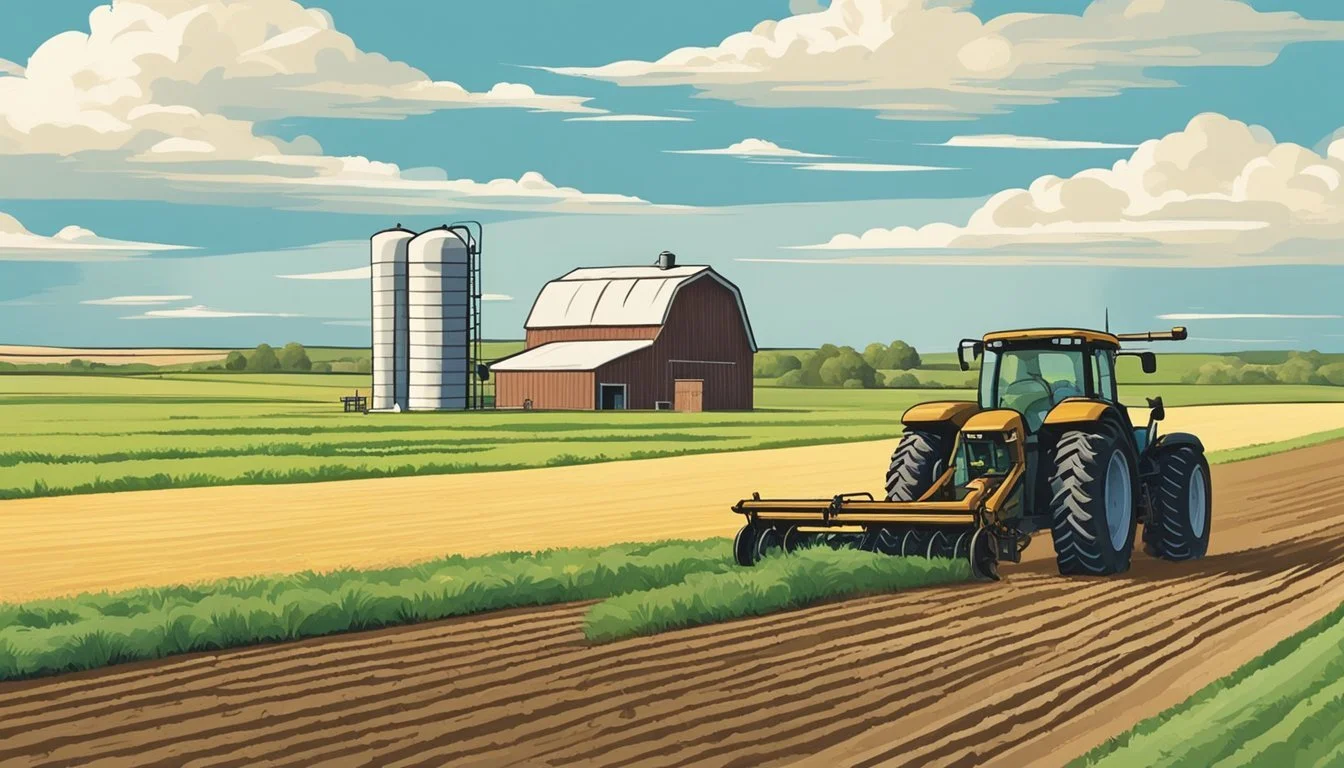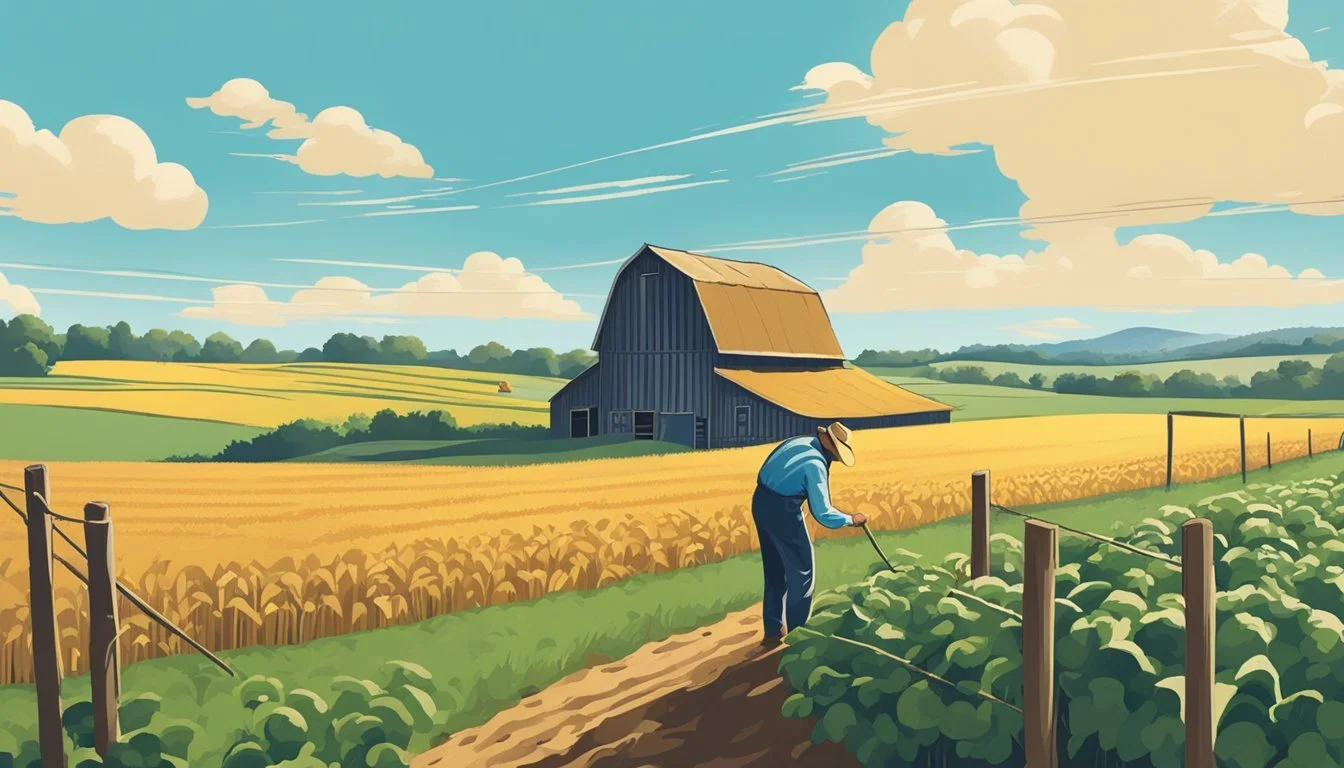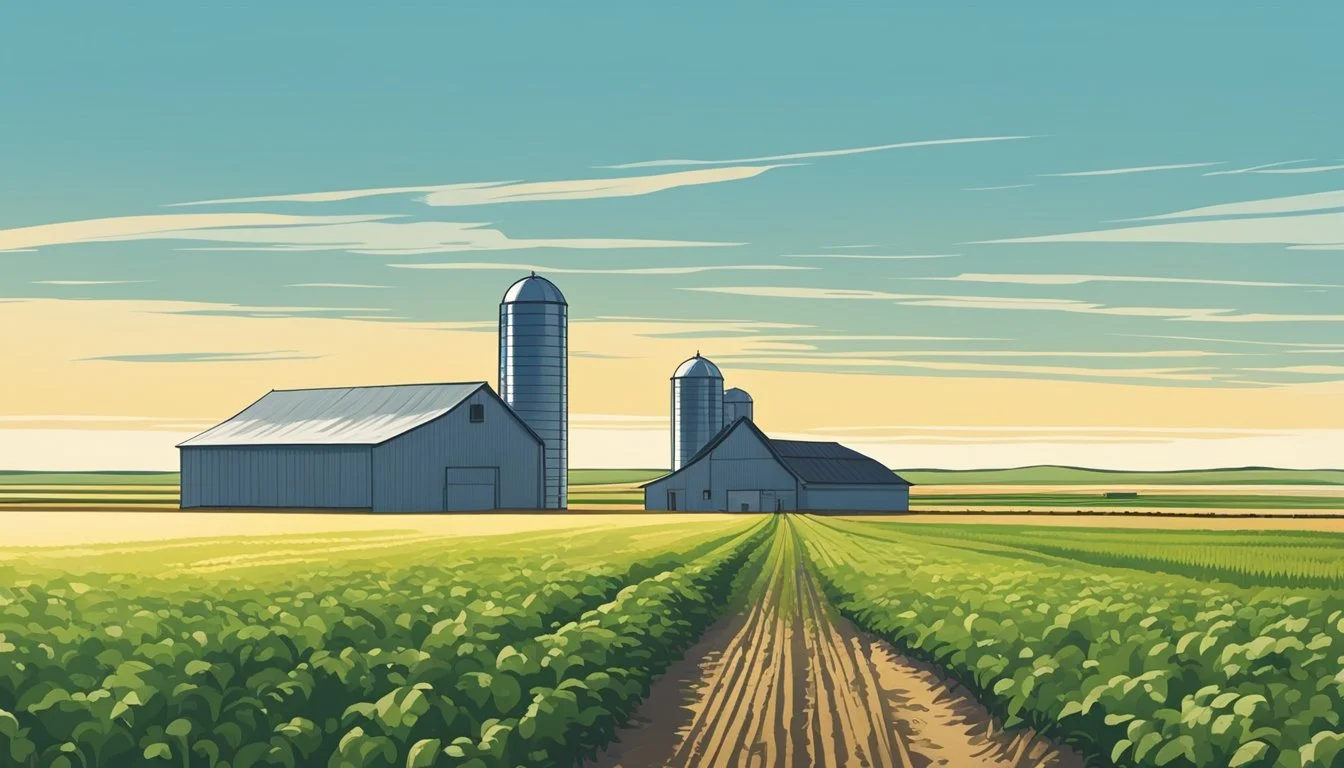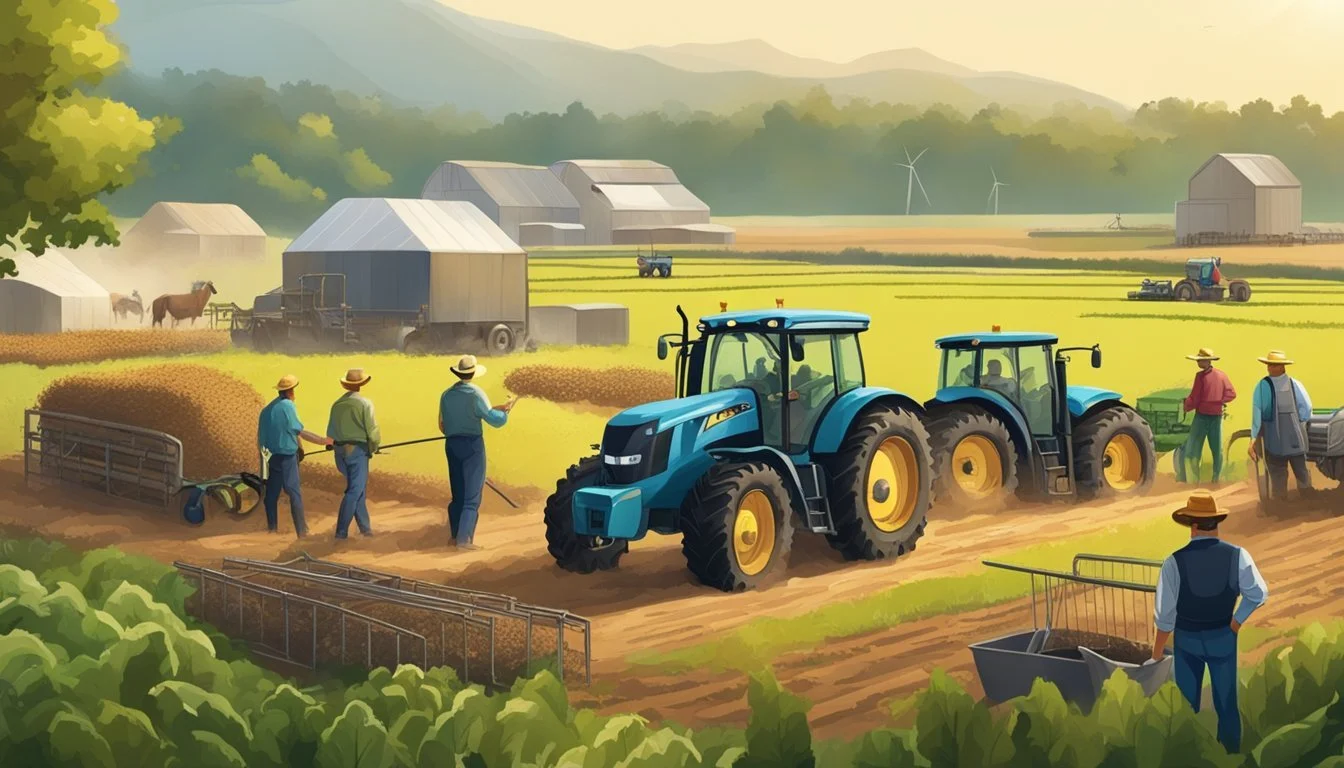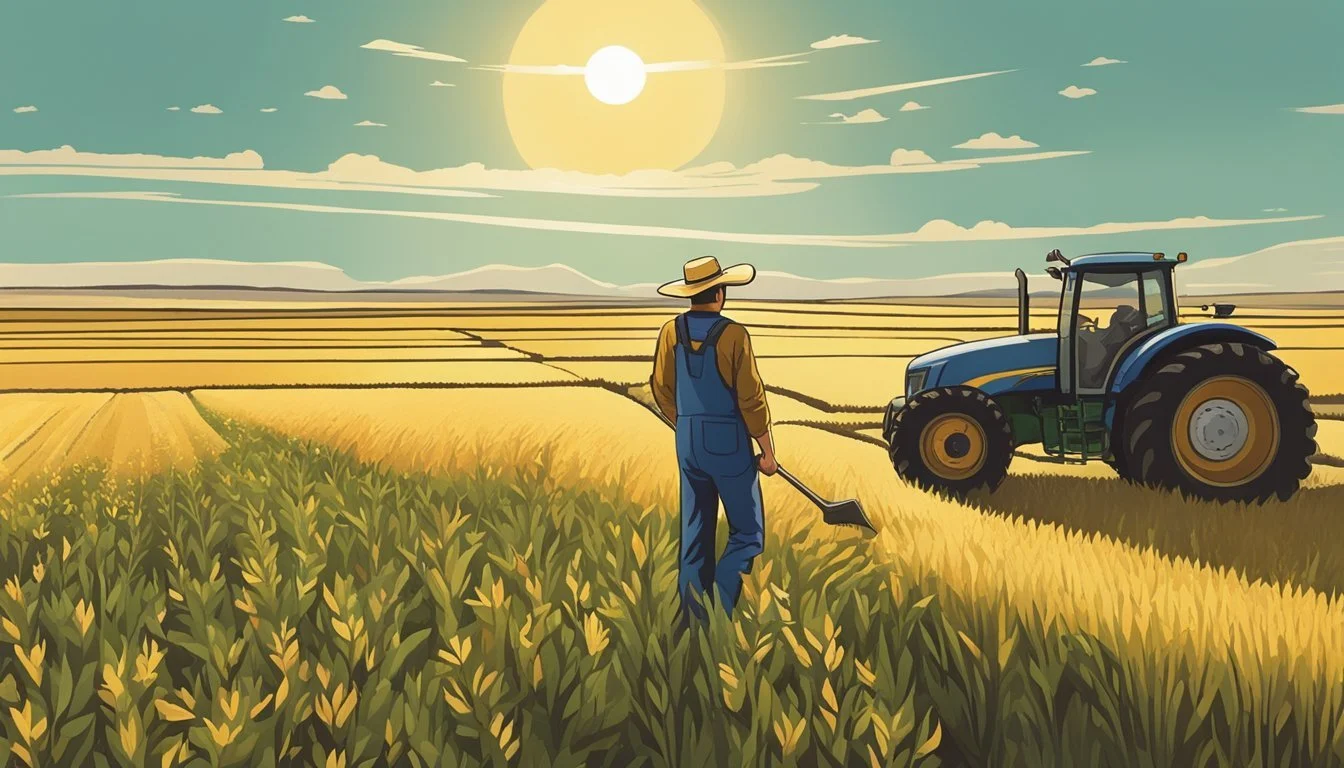Right to Farm Law in North Dakota
Understanding Its Impact and Scope
North Dakota's right-to-farm laws serve as a bulwark for farmers and ranchers operating within the state. Enacted to shield agricultural practices from nuisance lawsuits and urban encroachment, these laws fortify the agriculture sector, which is a vital component of the state's economy. With its roots going back to 1981, the legislation was born out of a necessity to ensure that the state's farming future remained secure, aiming to protect legitimate farming and ranching activities from being deemed as nuisances.
Over time, these statutes have evolved, reflecting the changing landscape of agricultural operations and societal values. Notably, in a move testifying to the law's perceived importance, North Dakota amended its state constitution to include explicit protection for farming and ranching practices. This addition marked a significant step, underscoring the centrality of agriculture in North Dakota's identity and economy.
With agricultural operations well-defined and the scope and intent of the right-to-farm laws laid out in the state's legal framework, the legislation provides a clear statement of support and security for the state's agricultural activities. It ensures that farmers and ranchers can operate without the fear of new neighbors or changing community norms undermining their livelihoods. However, this is set against a backdrop of reduced farm counts and farmland acreage since the law's introduction, a trend that reflects larger, more complex shifts in the agricultural sector at both state and national levels.
Historical Context of Right to Farm Laws
Right to Farm laws in North Dakota were established to protect agrarian interests against urban development pressures and nuisance lawsuits. They reflect a historical emphasis on preserving the farming heritage of the state.
Evolution of Farming in North Dakota
North Dakota has witnessed a significant transformation in its farming landscape since the state's foundation. Initially populated by family farms, the state has seen a 28 percent decrease in the number of farms since the enactment of its right-to-farm law in 1981. Despite the intent to safeguard farmers, the acreage dedicated to farmland has subsequently diminished by 2 percent. This shift points to the changing face of agriculture in North Dakota, where large-scale operations have begun to eclipse the traditional family-run farms.
Constitutional Foundation
The constitutional underpinning of North Dakota’s right-to-farm laws can be traced back to concerns about preserving farmland and protecting the interests of farmers and ranchers. The state's constitution has been interpreted to support the agricultural community, resulting in statutes that shield farmers from certain legal challenges. For instance, Chapter 10-06 of the North Dakota Century Code embodies provisions that restrict corporate farming, thereby underscoring the state’s commitment to its agricultural roots. These laws have been the subject of court discussions, reflecting their central role in shaping the state’s legal stance toward farming and ranching activities.
Details of the North Dakota Right to Farm Law
The Right to Farm Law in North Dakota is a critical legislative framework designed to safeguard the interests of the agricultural community by providing certain protections to farmers and ranchers in the state.
Key Provisions
Definition of Agricultural Operations: The law defines 'agricultural operations' broadly, encompassing all activities related to farming and ranching, including new agricultural technology and modern livestock production methods.
Protection for Established Farms: It protects existing agricultural operations from nuisance lawsuits by non-farming neighbors as long as the farm is lawfully in operation.
Encouragement of Continuity: By shielding farmers, the law endeavors to encourage the investment in and the use of agricultural technology, thus supporting the continuity and vitality of the agricultural industry in North Dakota.
Legal Implications
Limitation on Nuisance Lawsuits: The Right to Farm law limits nuisance lawsuits against farms and ranches, which means neighbors cannot easily sue farmers for the smells, noises, and other inconveniences typically associated with agricultural operations.
Inclusion in State Constitution: The legal framework for the Right to Farm in North Dakota has gained enough traction to be integrated into the state's Constitution, solidifying its permanence and importance within the state's legal parameters.
Impact on Farm Practices: It reinforces the right of farmers and ranchers to employ modern farming and livestock production practices without the threat of being hindered by legal challenges that could arise as residential areas expand into traditional farming areas.
Impact on Farming Practices
The implementation of North Dakota's Right to Farm Law has distinctively shaped farming operations, particularly through the adoption of technological advancements and modified livestock practices.
Advancements in Agricultural Technology
Farmers in North Dakota have leveraged the Right to Farm Law to integrate modern farming technology into their operations, enhancing productivity and efficiency. Precision agriculture tools, such as GPS-guided tractors and drones for crop monitoring, constitute a significant element of this technological pivot. These technologies allow farmers to apply water, fertilizers, and pesticides more effectively, reducing waste and environmental impact.
Effects on Livestock and Ranching Practices
The law has also had a noteworthy effect on livestock and ranching practices. It offers ranchers a degree of protection to pursue ranching practices that align with evolving industry standards, including those necessary for large-scale operations. This includes the application of modern housing, feeding, and health management protocols, which aim to optimize animal well-being and product quality while ensuring the economic viability of ranches.
Comparative Analysis
Right to Farm laws are designed to protect agricultural operations from nuisance lawsuits. This section examines how these laws compare between states, with a focus on North Dakota's legislation in relation to Montana's.
Right to Farm Laws in Other States
States like Florida and North Carolina have Right to Farm laws that share a common goal of protecting farmers, but they differ in details and scope. For instance, Florida's statute tends to protect agricultural operations by designating them as not a nuisance if they have been in operation for one year, assuming they were not considered a nuisance from the start. North Carolina has faced significant attention around its Right to Farm laws, especially due to high-profile lawsuits in the hog farming industry that challenged the scope of these protections.
Florida: Agricultural operations protected after one year of operation.
North Carolina: Laws spotlighted by hog farming industry lawsuits.
North Dakota Vs. Montana
When comparing North Dakota with Montana, several key differences emerge in the structure and implications of their Right to Farm laws. North Dakota's law, originally passed in 1981, has been linked to a 28% reduction in farm numbers since its inception, though it’s debated whether the law itself is the cause. The law is intended as a shield against nuisance suits and aims to preserve farmland.
Montana's approach to Right to Farm policies also aims to protect farming operations from nuisance claims. Nonetheless, nuances in the language and application of these laws can create varying levels of protection. Montana, for example, requires that agricultural operations be in place and not considered a nuisance since their inception to be protected under the law, similar to Florida's provision. Additionally, Montana offers a broader definition of agricultural operations, offering a wider net of coverage against nuisance suits.
North Dakota: Law passed in 1981, aimed at protecting existing farms from development pressures.
Montana: Includes broader definition of agriculture, offering extensive protection against nuisance suits.
Legal Challenges and Support
In North Dakota, the Right to Farm laws have been a contentious issue with legal challenges juxtaposed against strong support from agricultural organizations. These laws aim to balance the expansion of agriculture with the rights of landowners and have seen modifications influenced by both lawsuits and advocacy.
Nuisance Lawsuits and Protections
Right to Farm laws in North Dakota have historically offered protections for farmers against nuisance lawsuits. These lawsuits typically arise when landowners claim that a farm’s operations negatively affect their quality of life or property values. The law's intention is to shield farmers from such claims, provided they adhere to standard agricultural practices and are not negligent. By delineating the conditions under which farming operations are permitted, North Dakota’s laws aim to protect agricultural practices while respecting the rights of neighboring landowners.
Support from North Dakota Farm Bureau and Other Organizations
The North Dakota Farm Bureau has been a prominent supporter of the Right to Farm laws, advocating for farmers' ability to operate without the overhang of potential legal challenges from corporations or private landowners. Organizations supporting these laws posit that they are necessary to safeguard the interests of farmers and ensure the future of agriculture in the state. They argue that without such protections, farmers could be subject to litigation that might jeopardize the viability of farming activities. This is significantly supported by legal precedent set in state and federal courts, which, in various instances, have upheld the rights of farmers under these laws.
Public Perception and Campaigns
The discourse surrounding North Dakota's Right to Farm laws involves a diverse array of public campaigns and perceptions, significantly influenced by media representation and researcher insights. These campaigns and studies reflect the state's handling of agricultural and livestock production, balancing economic interests with environmental and social concerns.
Public Campaigns and Awareness
North Dakota has seen various public campaigns on either side of the Right to Farm debate. Proponents argue the law protects family farmers and their livelihoods, highlighting the need to safeguard agricultural production from excessive development. Campaigns supporting the law have often emphasized its importance in preserving traditional farming practices. Correspondingly, adverse public opinion points out the decrease in the number of family farms since the law's inception, positing a disconnect between the law's stated intent and its practical outcomes. Public forums and opinion pieces frequently cite a 28 percent drop in the number of farms as a concern, underscoring the potential for large-scale livestock production to benefit at the expense of smaller, family-run farms.
Media Representation and Researcher Insights
Media outlets in North Dakota have brought forth a spectrum of views from various researchers and stakeholders. Coverage has ranged from supportive editorials of "modern" agriculture to critical articles about the impact of large animal agriculture operations on local communities and the environment. The focus on livestock production has been particularly scrutinized for odor and waste management issues. Meanwhile, researchers have provided data-driven insights, often reflecting on the law's impact on farm size distribution and the operations of corporate farms within the state. Research findings have become a cornerstone for both pro and anti-campaign groups, who use these insights to support their arguments with objective data.
Future of Right to Farm in North Dakota
As the agricultural landscape evolves, the future of Right to Farm laws in North Dakota hinges on potential constitutional amendments and ongoing legislative trends, which could profoundly impact farming operations and land use policies.
Proposed Constitutional Amendments
In North Dakota, there are movements to strengthen the Right to Farm through constitutional amendments. Specifically, Article XI of the North Dakota Constitution may become the target for amendments aimed at reinforcing farming rights. One such proposal is the right-to-farm amendment, which would require gathering signatures to be placed on the ballot. If passed, it would likely enhance legal protections for farmers, offering them a shield against certain regulatory changes that could affect their operations.
Advocacy and Legislative Trends
The N.D. Feeding Families Committee is among the groups that advocate for stronger farm protections, emphasizing the importance of technology in future farming practices. Legislative trends show a clear trajectory towards modernizing farm laws, with lawmakers considering the balance between agricultural tradition and the integration of new technologies. The impact of legislative actions taken now may set the precedent for how the state navigates the intersection of farming rights, technological advancements, and community development for years to come.
Practical Aspects for Farmers and Ranchers
The Right to Farm Law in North Dakota impacts the daily functionality of agricultural professionals. It presents specific considerations for both daily operations and industry relationships.
Daily Farming Operations and Management
In North Dakota, farmers and ranchers benefit from statutes that support their freedom to operate effectively and sustainably. Daily operations such as planting, harvesting, and managing livestock, which include cattle, swine, dairy, and poultry, are at the heart of agricultural productivity. This is bolstered by the Right to Farm protections, which mitigate the risk of nuisance suits related to normal activities that might otherwise impact neighboring properties through noise or odors. Consequently, landowners can maintain their farms with a degree of legal confidence that is essential to their livelihood.
For instance, an equine rancher conducting training sessions or a dairy farmer operating milking machinery are conducting activities that fall within the scope of the Right to Farm legislation, provided they adhere to standard practices.
Interactions with Auction Markets and Corporations
Interactions with auction markets and corporations represent a crucial interface for North Dakota's farmers and ranchers. Auction markets are pivotal for livestock commerce, particularly for species like cattle and swine, as they help in setting the fair market value. The Right to Farm Law ensures that these vital exchanges can continue without undue hindrance from local litigation arising from operational externalities, such as transport noise.
Furthermore, relationships with agricultural corporations, whether through the supply of farm inputs or the distribution of farm commodities, are solidified. Corporations may approach partnerships with more assurance, understanding that the state's legal environment supports a robust agricultural framework. This is beneficial for landowners looking to innovate or expand their operations through corporate collaboration or investment.
Conclusion
Right-to-Farm laws in North Dakota provide critical legal protections meant to preserve and sustain the future of farming and ranching in the state. Despite changes in agricultural demographics, these laws establish a clear mandate, prioritizing agricultural operations over non-agricultural development in rural areas. The enactment of the Right-to-Farm statute reflects North Dakota's commitment to defend farmers and ranchers against nuisance lawsuits, particularly when they utilize standard, legally compliant farming practices.
Evolutions in the law reveal a complex picture; North Dakota’s family farms are decreasing in number while the land under cultivation remains robust. Critics suggest such laws could favor larger agricultural interests, which may contrast with the traditional image of family farms.
In terms of property rights, North Dakota's statute underlines the importance of agriculture to the state's identity and economy. These protections confer on farmers and ranchers the confidence needed to invest in and use modern agriculture techniques critical for productivity and sustainability.
A careful balance is consistently sought to ensure the rights of existing agricultural operations while considering the rights and expectations of neighboring properties. This balancing act is central to agricultural policy discussions, both in North Dakota and across the United States where similar Right-to-Farm laws are in place.

